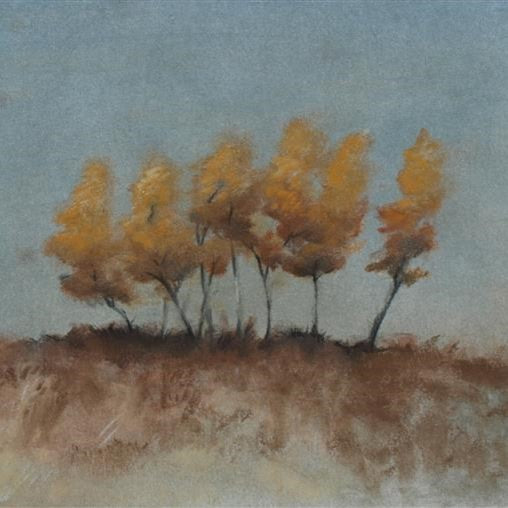How to Care for Your Pastel Art



Occasionally we get questions about the best way to care for art, whether that be in terms of storage, framing, or hanging artwork. Often the answer to the question is "it depends." That's because it is important to consider the medium used to create the artwork when determining how best to handle and care for it. While there is much that is consistent about caring for art across most mediums, there can be subtle differences among mediums as well. With this in mind, we're taking a closer look at how to care for your pastel paintings.
The practice of pastel painting dates back to at least the 18th century. Perhaps a lesser-known fact is that pastels have a distinguished history among many of the early master painters including Pierre-Auguste Renoir, Edgar Degas, and Pablo Picasso. In fact, Picasso sought out materials other than the usual oil pastels he had been working with prior to 1949, to diversify the type of surfaces on which he could create his masterpieces, at which time his supplier concocted an improved pastel medium.
Pastels are a pure pigment combined with a small amount of binding which is typically applied to a specialized textured pastel paper. While pastels are relatively delicate in nature, they are also one of the most permanent art mediums. When well cared for, pastels can last in near pristine condition for centuries.
How to: General Handling
Use great care when handling unframed pastel paintings. Don't touch the painted surface directly with bare hands in order to avoid smudging and transfer of oils that can compromise your artwork. If that's difficult to avoid, wear cotton or nitrile gloves when handling your paintings.
How to: Storage of Your Pastel Art
While we can't understate the importance of framing your newly acquired fine art pastels as soon as you can, we know there are times when that isn't immediately possible. In those instances, use great care in the meantime to protect your pastel paintings.
Similar to our recommendations for your watercolor pieces, store your unframed pastel painting laying flat and layer it within protective glassine sheets or acid free foam board. If using tape make sure that it is also acid free.
Artists often utilize a plan chest for storing their artwork, and while an entire chest may not be necessary, storage in a similar format is a good idea, such as a closed box of a slightly larger size than the artwork you are protecting. The same holds true if you are transporting or shipping your pastel art to a different location. Your approach to packaging should incorporate layering the art with protective acid-free materials and carefully placing it within a well-constructed and secure box.
Just as you would use care to select a location to hang your artwork, don't store your pastel painting in damp or humid spaces to avoid degrading the quality of your paintings.
How to: Framing Your Pastel Art
Not unlike many other mediums, framing is a very important step in protecting your pastel paintings. Although it can be tempting to use a less expensive framer, we recommend being more discerning when it comes to original artwork. Seek out a professional framer who understands that pastels require careful handling.
Ensure that your framer of choice uses the best quality framing materials to frame pastel paintings. The gold standard for working with pastels and other fine artworks includes archival framing materials, rag board, and acid free foam core. Spacer materials should be used to ensure that the painting doesn’t touch the glass directly, which can cause particles to adhere to the glass. At the most fundamental level, your framer should use real glass to mitigate any problems caused by pastel particles that can be shed. There are several options when it comes to glass and many framers and artists who work with pastels prefer museum glass, the highest quality for framing.
Materials to avoid include non glare glass, cheap mat board, and brown cardboard backings which can stain and yellow your painting. In summary, always seek out a framer that utilizes the best archival materials when framing your pastel paintings.
How to: Hanging and Displaying Your Pastel Art
Not unlike watercolors, oil paintings, and other fine artwork, one of the main considerations for protecting your art is shielding your pastels from direct sunlight and other forms of ultraviolet rays. Don't hang your pastel painting opposite a window or the UV rays may fade pigments.
In addition to the natural light in a room, consider the other light sources in your home when hanging artwork. All types of ultraviolet light can be problematic for your art, including fluorescent and incandescent lighting. LEDs are the best choice for rooms in which you are displaying your beloved works.
Excessive humidity is also the enemy of artworks. Don’t hang your original paintings in rooms with very damp air such as the bathroom. Also, avoid rooms with exposure to oils and heat emitting appliances such as the kitchen. Ideally, your fine art including pastel art is best protected in dry interior spaces within your home which aren’t subject to major temperature fluctuations or exposed to direct sunlight.
Final Thoughts
We know you will agree with us that original art is a precious commodity, not just for its monetary value but also for the joy that it brings to our domestic environment. Using care in how we maintain our artworks goes a long way toward ensuring they can be enjoyed and appreciated for generations to come.
If you’re in the market for pastel art or other original works, we have a continuously updated selection by talented artists. You can peruse artworks updated weekly on our website.





